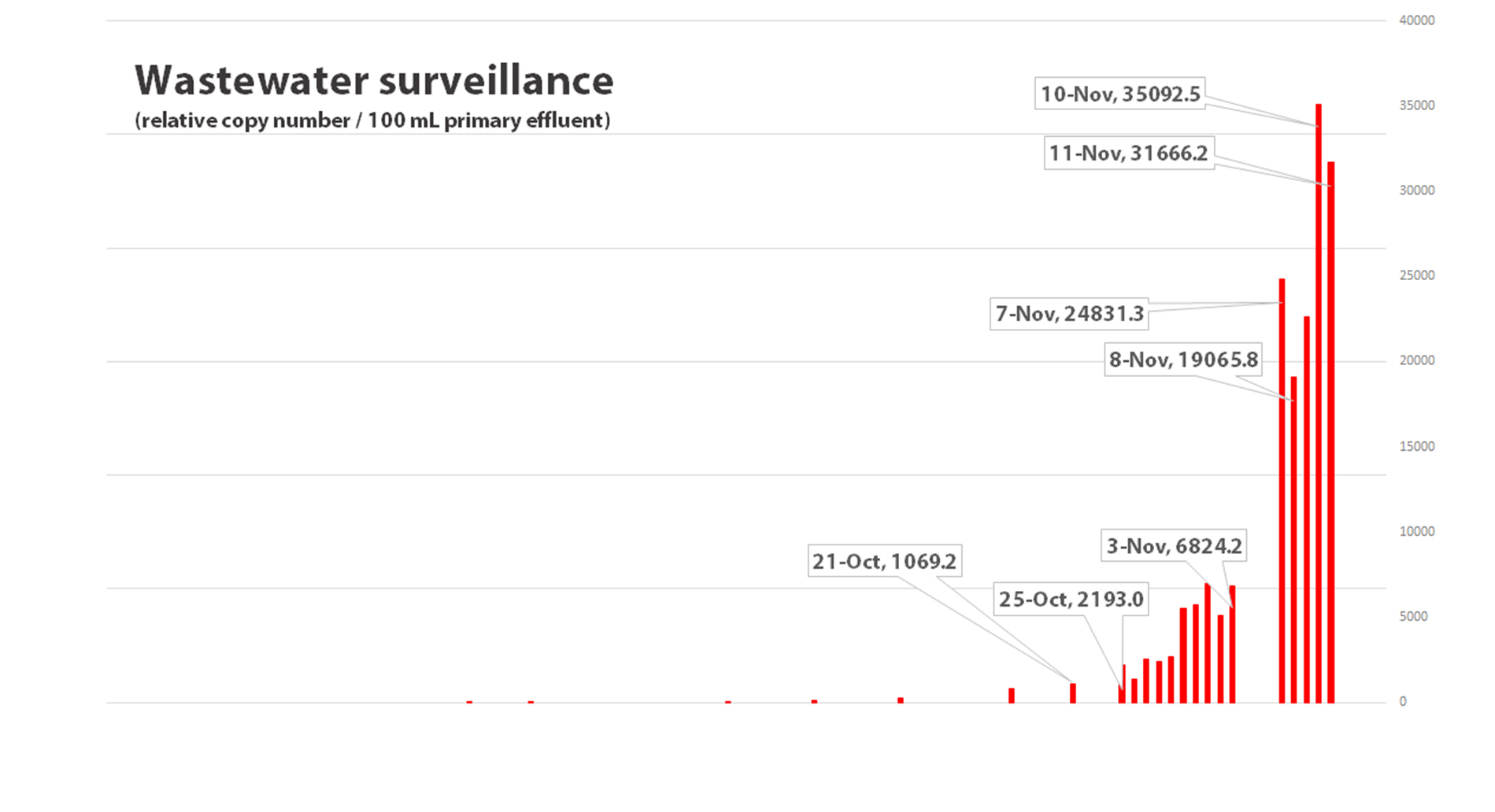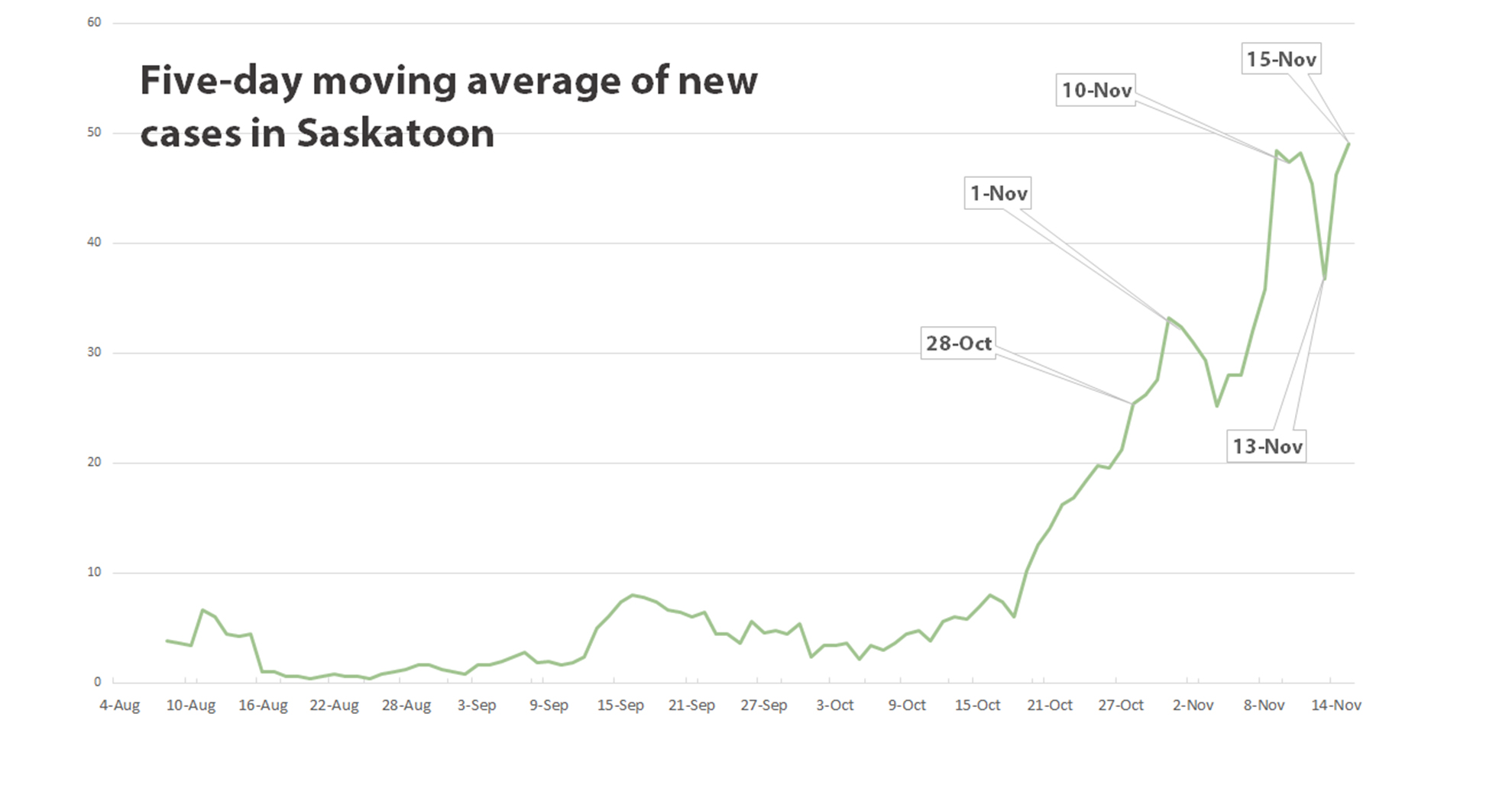
Imminent surge in new COVID-19 cases in Saskatoon: USask wastewater data
Data collected by the University of Saskatchewan (USask) wastewater surveillance team shows Saskatoon’s COVID-19 case numbers are likely to increase exponentially in the next seven days.
By USask Research Profile and Impact“Numbers of copies of SARS-CoV-2 viral RNA in the wastewater have been climbing,” said USask toxicologist Markus Brinkmann. “We expect another drastic increase this week and potentially ranging into next week.”
Infected people shed virus traces through their feces, often even before COVID-19 symptoms are apparent. Changes to virus amount in wastewater precede changes in case counts at COVID testing centres by about one week.
The wastewater surveillance approach tracks the rate of change in COVID-19 spread on a population basis, not individual cases. However, based on the slope of the curve of rising case numbers, the team can extrapolate from the wastewater data to predict the impact on the case count.
“We are expecting an average of 100 to 150 new cases in Saskatoon each day. With no significant changes in transmission, this trend can be expected to continue,” Brinkmann said.
In the most recent reporting period (ending on Sunday, November 15), the amount of virus in the wastewater sampling increased 2.5 times over the previous week.
The early warning approach, developed by USask researchers and partners at the City of Saskatoon (CoS) and the Saskatchewan Health Authority (SHA), tracks the total amount of SARS-CoV-2 virus circulating in the city’s wastewater through lab analysis of samples from Saskatoon’s municipal treatment plant.
“This approach certainly does seem to demonstrate predictive value. It’s another piece of evidence that gives early warning to the system about potential surges in COVID-19 cases,” said Dr. Cory Neudorf, a USask professor of community health and epidemiology and consulting medical health officer with the SHA.


While university researchers also provide computer modelling predictions, Neudorf said that wastewater approach can assist with pandemic response policy and planning.
“This data can provide an early warning that testing capacity could be stretched further in the coming week,” Neudorf said. “And if we know that case numbers are likely to go up, we know that a week or two after that, hospitalization rates and ICU admissions will go up. The net impact is that this helps in deciding on whether further restrictions in polices are needed now in anticipation of those increases, so that the pandemic doesn’t get ever more out of control.”
The research team is gathering samples and processing data five times per week—an increase from October when the researchers gathered data once per week. Team leader John Giesy is hopeful the pilot project—funded by the USask-led Global Water Futures program and supported by in-kind contributions from the CoS—can be continued beyond November, provided that funding can be found.
Giesy noted that people who show up at COVID-19 testing stations are usually those with symptoms or suspected COVID exposure—which misses most of the so-called asymptomatic or pre-symptomatic cases. And as the most accurate nasal swab is collected 48 hours after the onset of symptoms and testing is not instant, positive test results show the past, not the present.
“Our data provide advance warning, whereas approaches based on individual testing data are retrospective,” Giesy said.
The team’s wastewater surveillance approach is based on a method for measuring SARS-CoV-2 virus environmental degradation developed by Giesy and Yuwei Xie. Working with USask engineering researcher Kerry McPhedran, the team has adapted the method to capture COVID-19 information. Engineering graduate student Shahab Minaei and his supervisor Jafar Soltan are also part of the team.
The USask approach has been validated by reliability testing organized by the Canadian Water Network. Laboratories across Canada compared different methods of analysis, and found the USask-developed method was accurate in detecting the virus at different concentrations.
Research into wastewater surveillance is underway in several places in the world. The USask method is also being used by institutions in Ontario, Texas and China.

